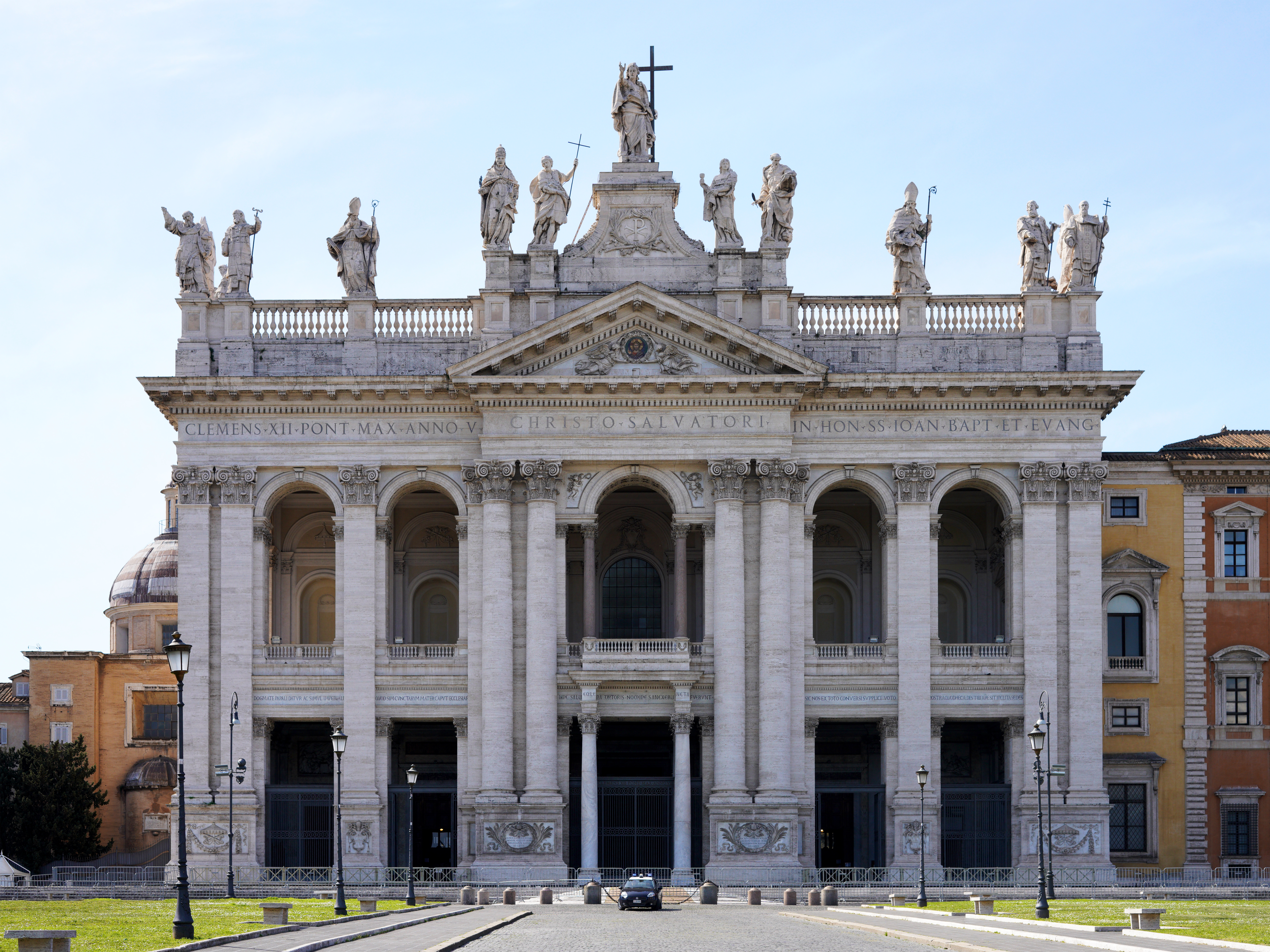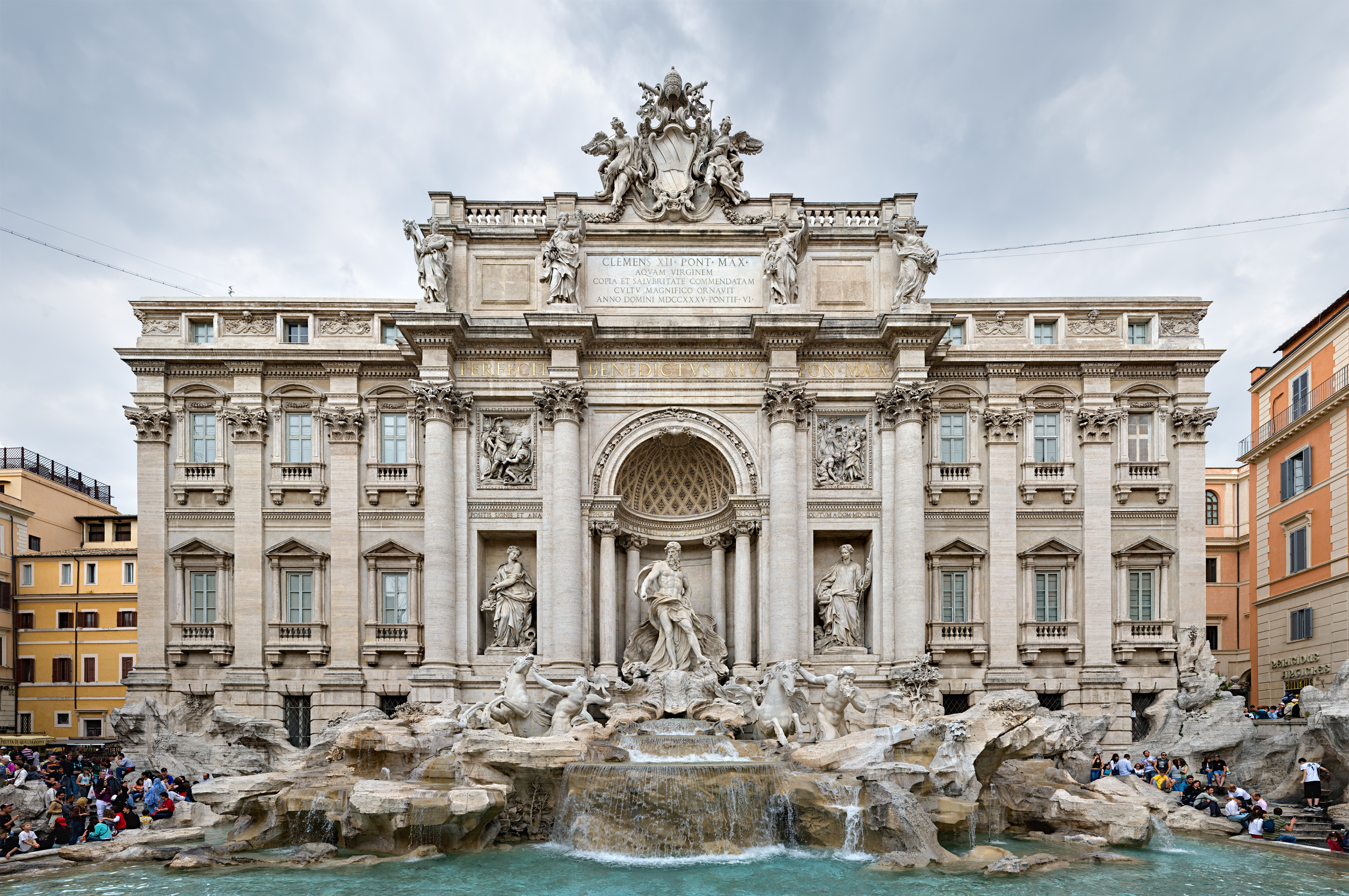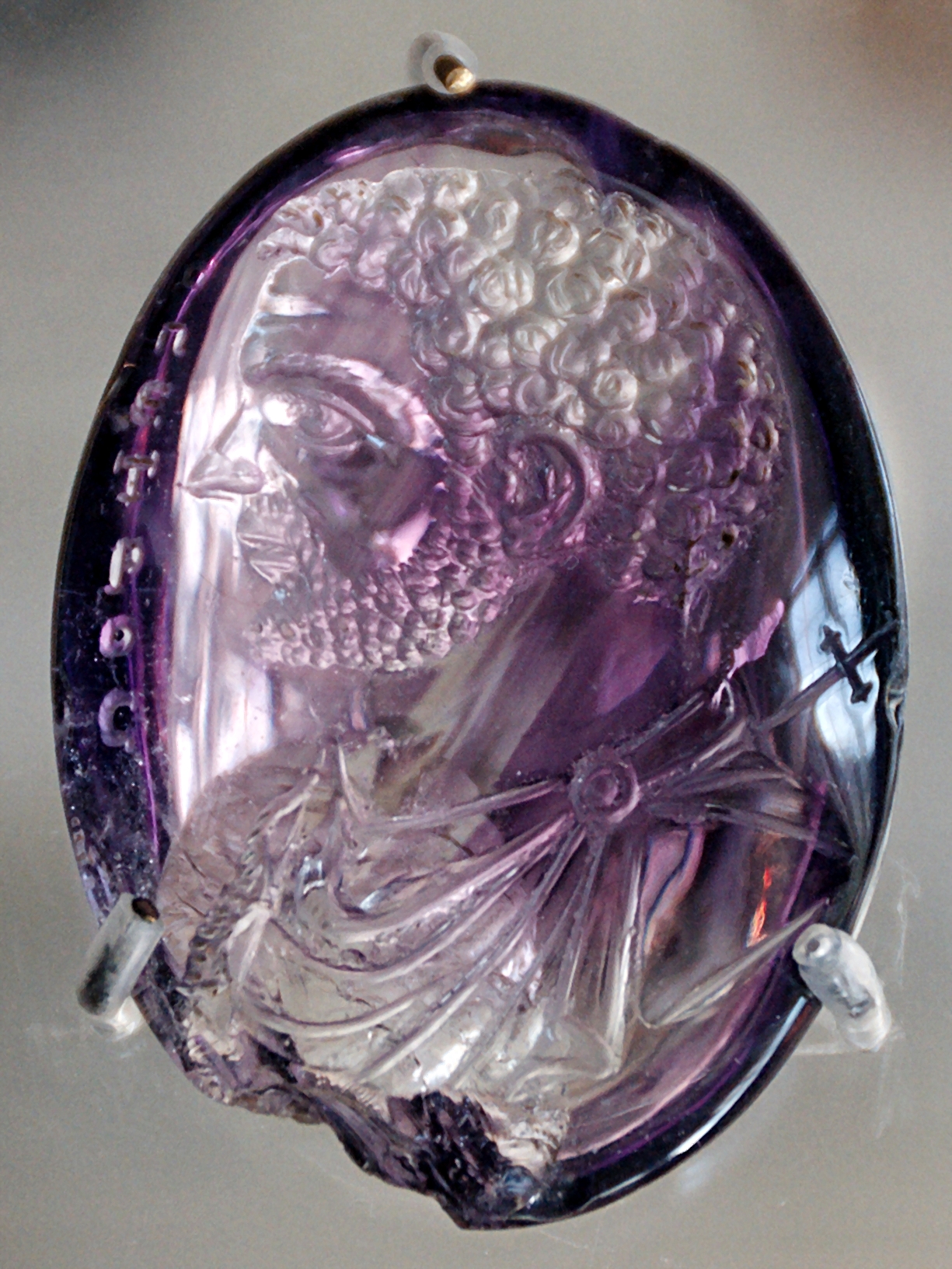|
Lambert-Sigisbert Adam
Lambert-Sigisbert Adam (10 October 170012 May 1759) was a lorrain sculptor born in 1700 in Nancy. The eldest son of sculptor Jacob-Sigisbert Adam, he was known as Adam l’aîné ("the elder") to distinguish him from his two sculptor brothers Nicolas-Sébastien Adam, known as "Adam le jeune" ("the younger"), and François Gaspard Balthazar Adam. His sister Anne Adam married Thomas Michel, an undistinguished sculptor, and became the mother of famous sculptor Claude Michel, known as Clodion, who received his early training in the studio of his uncle Lambert-Sigisbert. Life and career In 1723 Adam received the Prix de Rome for study at the French Academy in Rome, which gave him a year scholarship in Rome, where he studied the works of the greats including Bernini and restored with much ability and late-Baroque freedom of interpretation a disparate group of fragmentary Roman sculptures to form a much-admired ensemble depicting ''Achilles and the Daughters of Lycomedes'' that was pur ... [...More Info...] [...Related Items...] OR: [Wikipedia] [Google] [Baidu] |
Jean-Baptiste Perronneau
Jean-Baptiste Perronneau (c. 1716 – 19 November 1783) was a French painter who specialized in portraits executed in pastels. Biography Perronneau was born in Paris. His exact date of birth is unknown, but posthumous accounts suggest that it was around 1716. He began his career as an engraver, apparently studying with Laurent Cars, whose portrait he drew, and working for the entrepreneurial printseller Gabriel Huquier, rue Saint-Jacques, Paris, making his first portraits in oils, and especially in pastels, in the 1740s. His career was much in the shadow of the master of the French pastel portrait, Maurice Quentin de La Tour. In the Salon of 1750, Perronneau exhibited his pastel portrait of Maurice Quentin de la Tour, but found to his dismay that La Tour was exhibiting his own self-portrait, perhaps a malicious confrontation to demonstrate his superiority in the technique. He made his Salon debut with a pastel portrait in 1746 and received full membership in the Académie R ... [...More Info...] [...Related Items...] OR: [Wikipedia] [Google] [Baidu] |
Melchior De Polignac
Melchior Cardinal de Polignac (11 October 1661 – 20 November 1742) was a French diplomat, Cardinal and neo-Latin poet. Second son of Armand XVI, marquis de Polignac and Marquis Chalancon, Governor of Puy; and Jacqueline de Beauvoir -Grimoard-de Roure (his third wife), Melchior de Polignac was born at Chateau de la Ronte, near Puy en Vélay, Lavoûte-sur-Loire, Haute-Loire, Auvergne. Education and early career A precocious child, he was taken by his uncle to Paris, and installed in the Jesuit Collège de Clermont (later named the Collège de Louis le Grand). At the appropriate time, he passed to the Collège de Harcourt, where thanks to the misdirected efforts of a teacher who was an enthusiast for Aristotle, Polignac adopted the opposite view and became a Cartesian. His thesis in Theology at the Sorbonne (1683) discussed the Kings of Judah who had destroyed the "high places". He was either prescient, or aware of discussion around Louis XIV which led in two years to the revoca ... [...More Info...] [...Related Items...] OR: [Wikipedia] [Google] [Baidu] |
Palace Of Versailles
The Palace of Versailles ( ; french: Château de Versailles ) is a former royal residence built by King Louis XIV located in Versailles, Yvelines, Versailles, about west of Paris, France. The palace is owned by the French Republic and since 1995 has been managed, under the direction of the Ministry of Culture (France), French Ministry of Culture, by the Public Establishment of the Palace, Museum and National Estate of Versailles. Some 15,000,000 people visit the palace, park, or gardens of Versailles every year, making it one of the most popular tourist attractions in the world. Louis XIII built a simple hunting lodge on the site of the Palace of Versailles in 1623 and replaced it with a small château in 1631–34. Louis XIV expanded the château into a palace in several phases from 1661 to 1715. It was a favorite residence for both kings, and in 1682, Louis XIV moved the seat of his court and government to Versailles, making the palace the ''de facto'' capital of France. This ... [...More Info...] [...Related Items...] OR: [Wikipedia] [Google] [Baidu] |
Paris Salon
The Salon (french: Salon), or rarely Paris Salon (French: ''Salon de Paris'' ), beginning in 1667 was the official art exhibition of the Académie des Beaux-Arts in Paris. Between 1748 and 1890 it was arguably the greatest annual or biennial art event in the Western world. At the 1761 Salon, thirty-three painters, nine sculptors, and eleven engravers contributed. Levey, Michael. (1993) ''Painting and sculpture in France 1700–1789''. New Haven: Yale University Press, p. 3. From 1881 onward, it has been managed by the Société des Artistes Français. Origins In 1667, the royally sanctioned French institution of art patronage, the Académie royale de peinture et de sculpture (a division of the Académie des beaux-arts), held its first semi-public art exhibit at the Salon Carré. The Salon's original focus was the display of the work of recent graduates of the École des Beaux-Arts, which was created by Cardinal Mazarin, chief minister of France, in 1648. Exhibition at the Salo ... [...More Info...] [...Related Items...] OR: [Wikipedia] [Google] [Baidu] |
Académie Royale De Peinture Et De Sculpture
The Académie Royale de Peinture et de Sculpture (; en, "Royal Academy of Painting and Sculpture") was founded in 1648 in Paris, France. It was the premier art institution of France during the latter part of the Ancien Régime until it was abolished in 1793 during the French Revolution. It included most of the important painters and sculptors, maintained almost total control of teaching and exhibitions, and afforded its members preference in royal commissions. Founding In the 1640s, France's artistic life was still based on the medieval system of guilds like the Académie de Saint-Luc which had a tight grip on the professional lives of artists and artisans alike. Some artists had managed to get exemptions but these were based on favoritism rather than merit. A few "superior men" who were "real artists", suffered and felt humiliated under this system. In view of increasing pressure by the Parisian guilds for painters and sculptors to submit to their control, the young but alre ... [...More Info...] [...Related Items...] OR: [Wikipedia] [Google] [Baidu] |
Charles Wleughels
Charles is a masculine given name predominantly found in English and French speaking countries. It is from the French form ''Charles'' of the Proto-Germanic name (in runic alphabet) or ''*karilaz'' (in Latin alphabet), whose meaning was "free man". The Old English descendant of this word was '' Ċearl'' or ''Ċeorl'', as the name of King Cearl of Mercia, that disappeared after the Norman conquest of England. The name was notably borne by Charlemagne (Charles the Great), and was at the time Latinized as ''Karolus'' (as in ''Vita Karoli Magni''), later also as '' Carolus''. Some Germanic languages, for example Dutch and German, have retained the word in two separate senses. In the particular case of Dutch, ''Karel'' refers to the given name, whereas the noun ''kerel'' means "a bloke, fellow, man". Etymology The name's etymology is a Common Germanic noun ''*karilaz'' meaning "free man", which survives in English as churl (< Old English ''ċeorl''), which developed its de ... [...More Info...] [...Related Items...] OR: [Wikipedia] [Google] [Baidu] |
Alessandro Galilei
Alessandro Maria Gaetano Galilei (25 August 1691 – 21 December 1737) was an Italian mathematician, architect and theorist, a member of the same patrician family of Galileo. Biography Born in Florence, he received architectural and engineering training from Antonio Maria Ferri, an outstanding figure of the Accademia dei Nobili, who lectured and wrote a treatise on perspective, fortifications and artillery. With him young Galilei worked on the study of building techniques, stereometry, hydraulics. Visiting English ''milord''s were impressed with the classicism of his early designs, and he was invited by a party of English to London in 1714. There he participated in a variety of architectural projects, most notably collaborating with the civic engineer Nicholas Dubois. The only other notable Italian architect in London at the time was Giacomo Leoni. The two architects shared a classicising bent that appealed to the English but was at odds with current Baroque architectural practic ... [...More Info...] [...Related Items...] OR: [Wikipedia] [Google] [Baidu] |
Luigi Vanvitelli
Luigi Vanvitelli (; 12 May 1700 – 1 March 1773), known in Dutch as (), was an Italian architect and painter. The most prominent 18th-century architect of Italy, he practised a sober classicising academic Late Baroque style that made an easy transition to Neoclassicism. Biography Vanvitelli was born in Naples, the son of an Italian woman, Anna Lorenzani, and a Dutch painter of land and cityscapes (veduta), Caspar van Wittel, who also used the name Vanvitelli. He was trained in Rome by the architect Nicola Salvi, with whom he worked on the construction of the Trevi Fountain. Following his notable successes in the competitions for the facade of the Basilica di San Giovanni in Laterano (1732) and the facade of Palazzo Poli behind the Trevi Fountain, Pope Clement XII sent him to the Marche to build some papal projects. At Ancona in 1732, he devised the vast Lazaretto, a pentagonal building covering more than 20,000 square meters, built to protect the military defensive author ... [...More Info...] [...Related Items...] OR: [Wikipedia] [Google] [Baidu] |
Nicola Salvi
Nicola Salvi or Niccolò Salvi (6 August 1697 (Rome) – 8 February 1751 (Rome)) was an Italian architect; among his few projects completed is the famous Trevi fountain in Rome, Italy. Biography Admitted to the Roman Academy of Arcadia in 1717, Salvi became an architect only after studies in mathematics and philosophy. His mentor in architecture was Antonio Canevari, who served also as consulting architect for the king of Portugal. In 1728, Canevari left for Lisbon, and Salvi continued his commissions in Rome. Among these were ephemeral decorations and small decorative projects. In Rome, the patronage for the building of large structures had declined relative to the previous century. In 1732, competitions were held by Pope Clement XII for two large projects. One was to create a new façade for the church of Saint John Lateran, and another was for a public fountain at Trevi (rione of Rome), Trevi. The former completion was won by Alessandro Galilei, though Salvi's design had much ... [...More Info...] [...Related Items...] OR: [Wikipedia] [Google] [Baidu] |
Trevi Fountain
The Trevi Fountain ( it, Fontana di Trevi) is an 18th-century fountain in the Trevi district in Rome, Italy, designed by Italian architect Nicola Salvi and completed by Giuseppe Pannini and several others. Standing high and wide, it is the largest Baroque fountain in the city and one of the most famous fountains in the world. The fountain has appeared in several films, including ''Roman Holiday'' (1953); '' Three Coins in the Fountain'' (1954); Federico Fellini's classic, ''La Dolce Vita'' (1960); ''Sabrina Goes to Rome'' (1998); and ''The Lizzie McGuire Movie'' (2003). History before 1629 The fountain, at the junction of three roads (), marks the terminal point of the "modern" —the revived , one of the aqueducts that supplied water to ancient Rome. In 19 BCE, supposedly with the help of a virgin, Roman technicians located a source of pure water some from the city. (This scene is presented on the present fountain's façade.) However, the eventual indirect route of the ... [...More Info...] [...Related Items...] OR: [Wikipedia] [Google] [Baidu] |
Accademia Di San Luca
The Accademia di San Luca (the "Academy of Saint Luke") is an Italian academy of artists in Rome. The establishment of the Accademia de i Pittori e Scultori di Roma was approved by papal brief in 1577, and in 1593 Federico Zuccari became its first ''principe'' or director; the statutes were ratified in 1607. Other founders included Girolamo Muziano and Pietro Olivieri. The Academy was named for Luke the Evangelist, the patron saint of painters. From the late sixteenth century until it moved to its present location at the Palazzo Carpegna, it was based in an urban block by the Roman Forum and although these buildings no longer survive, the Academy church of Santi Luca e Martina, does. Designed by the Baroque architect, Pietro da Cortona, its main façade overlooks the Forum. History The Academy's predecessor was the ''Compagnia di San Luca'', a guild of painters and miniaturists, which had its statutes and privileges renewed at the much earlier date of 17 December 1478 by Pope ... [...More Info...] [...Related Items...] OR: [Wikipedia] [Google] [Baidu] |
Engraved Gems
An engraved gem, frequently referred to as an intaglio, is a small and usually semi-precious gemstone that has been carved, in the Western tradition normally with images or inscriptions only on one face. The engraving of gemstones was a major luxury art form in the Ancient world, and an important one in some later periods. Strictly speaking, ''engraving'' means carving ''in intaglio'' (with the design cut ''into'' the flat background of the stone), but relief carvings (with the design projecting ''out of'' the background as in nearly all cameos) are also covered by the term. This article uses ''cameo'' in its strict sense, to denote a carving exploiting layers of differently coloured stone. The activity is also called ''gem carving'' and the artists ''gem-cutters''. References to antique gems and intaglios in a jewellery context will almost always mean carved gems; when referring to monumental sculpture, counter-relief, meaning the same as ''intaglio'', is more likely to be used. ... [...More Info...] [...Related Items...] OR: [Wikipedia] [Google] [Baidu] |







